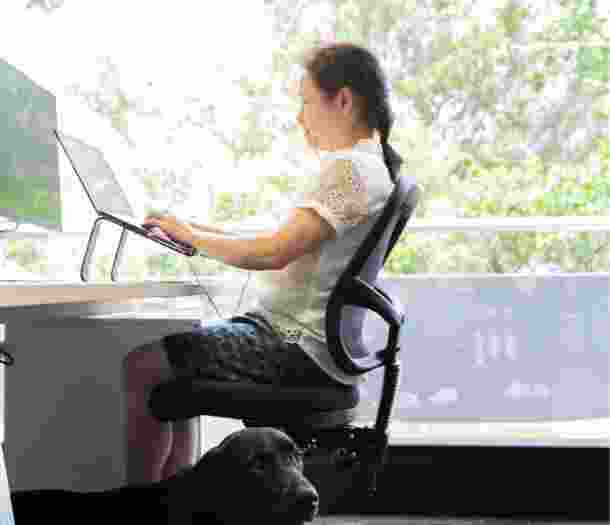Ready to continue?
Seems like you have filled this form earlier. Let’s pick up where you left off.
What is digital accessibility?
Accessible materials are not a choice but an obligation. Australian legislation requires that people with disabilities have equal access to information and services. All employees need accessible information to perform their roles, including those who use screen readers.
Digital accessibility is the process of making digital products accessible to all audiences, including people who are blind or have low vision. Poor digital accessibility will restrict people from accessing your content, such as websites, mobile apps, documents, and social media posts.
Common Assistive Technologies used by people who are blind or have low vision include:
- Screen readers which read out the visual elements on a device’s screen,
- Magnifiers, which can magnify or change the colours of the screen, and
- Braille displays, which translate screen elements into braille.
Why design digital content for accessibility?

There are many reasons to design content for accessibility.
- You can make it easier for people who are blind or have low vision to access your digital content with simple changes on your part.
- Designing accessibly opens up your content to more people. There are over 500,000 people who are blind or have low vision currently living in Australia – accessible digital content can increase reach amongst these groups.
- Australian legislation requires that people with disabilities have equal access to information and services.
- Good design is accessible for all – making experience better for everyone, not just those who are blind or have low vision. Benefits include improved structure, usability, and appearance.
What can you do to ensure accessibility?
There are many ways to ensure that the content you create can be accessed by everyone.
Consider accessibility first
Think about accessibility at the beginning, for example in the initial design stages for a new website. This is far more efficient than trying fix to issues later.
Design and code for accessibility
Accessibility doesn’t need to get in the way of good digital content design. Different web development platforms have different accessibility features. Developers need to understand the accessibility features of the platforms they are using so they can create accessible code.
Manual testing
The best way to understand how your users will experience your content is to test it! For example, check how your content looks when magnified or with larger font sizes. Use online tools to make sure your colours meet contrast guidelines, and make sure videos have high quality captions. It can also be useful to test your materials using a screen reader if you know how. Make sure you share your materials with someone who has lived experience of low vision or blindness and ask for their feedback.
Templates
Using an accessible PowerPoint or Word template helps ensure that slides, headings, colours, contrast, fonts are accessible for all audiences. Accessible templates are designed so that screen readers can more logically read the slide or document content.
Automated tools
Automated checkers are tools which scan websites, applications or documents for accessibility issues. They can be helpful but have limitations and give an indication of issues only. They may also flag things that don’t actually affect the user experience.
Training
Our highly practical and effective courses will ensure your content becomes more accessible for everyone.
While templates can help, it is important to train everyone who will be creating content. Our accessible documents courses cover all key Microsoft 365 applications, getting you or your staff quickly up-to-speed with creating documents that are accessible to everyone.
Training courses include:
- Introduction to Accessible Content
- Accessible Word Documents and Outlook Emails
- Accessible PowerPoint Presentations
- Delivering Accessible Presentations
- Accessible Excel Spreadsheets.
Go to learn.guidedogs.com.au to learn more or enrol in a course.
Extra resources
Download this handy checklist from the training courses to support you in checking your documents for accessibility.
Guide Dogs Accessibility Checklist
